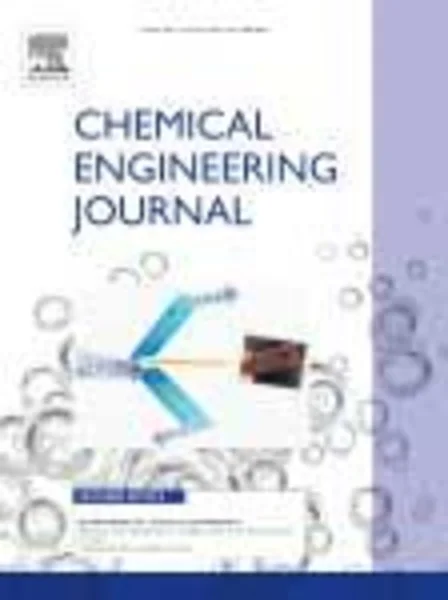-
coupling of adsorption, coagulation, and ultrafiltration processes for the removal of emerging contaminants in a secondary effluent
جزئیات بیشتر مقاله- تاریخ ارائه: 1392/01/01
- تاریخ انتشار در تی پی بین: 1392/01/01
- تعداد بازدید: 632
- تعداد پرسش و پاسخ ها: 0
- شماره تماس دبیرخانه رویداد: -
the removal of eleven emerging contaminants (acetaminophen, metoprolol, caffeine, antipyrine, sulfamethoxazole, flumequine, ketorolac, atrazine, isoproturon, 2-hydroxybiphenyl and diclofenac) present in a wwtp effluent by applying several combined treatments has been investigated. these combinations were constituted by pac adsorption and/or coagulation pre-treatments followed by uf, as well as by an uf treatment followed by gac adsorption post-treatment. pac pre-treatment decreased membrane fouling, with the advantage that pac was separated from the final effluent in the uf step. low pac dose in the range 10–50 mg l−1 in the adsorption pre-treatment was enough in order to remove most of the emerging contaminants and to partially improve water quality parameters. however, if the goal is to reach a high improvement of water quality parameters in the pre-treatment step, a pac dose above 500 mg l−1 was required. although coagulation pre-treatment did not increase appreciably the permeate flux in the uf step, the final quality of the permeate was improved, especially when the combination fe(iii)/uf was applied. finally, a significant positive effect of the gac post-treatment after the uf treatment was appreciated, which led to an increase in the removal of the water quality parameters and a significant elimination of emerging contaminants.
مقالات جدیدترین رویدادها
-
استفاده از تحلیل اهمیت-عملکرد در ارائه الگوی مدیریت خلاقیت سازمانی و ارائه راهکار جهت بهبود
-
بررسی تاثیر ارزش وجوه نقد مازاد بر ساختار سرمایه شرکت های پذیرفته شده در بورس اوراق بهادار تهران
-
بررسی تأثیر سطح افشای ریسک بر قرارداد بدهی شرکت های پذیرفته شده در بورس اوراق بهادار تهران
-
بررسی تأثیر رتبه بندی اعتباری مبتنی بر مدل امتیاز بازار نوظهور بر نقد شوندگی سهام با تأکید بر خصوصی سازی شرکت ها
-
تأثیر آمیخته بازاریابی پوشاک ایرانی بر تصویر ذهنی مشتری پوشاک ایرانی (هاکوپیان)
-
ارزیابی تأثیر فرکانس ورودی بر شدت روانگرایی بستر موج شکن مرکب با استفاده از آزمایشات مدل میزلرزه 1g
-
بررسی مطالعات انجام شده در حوزه فراموشی سازمانی در ایران
-
بررسی اندرکنش خاک و دیوار انعطاف پذیر ساحلی تحت بارگذاری زلزله
-
بررسی میزان افسردگی دانشجویان دانشکده پرستاری و مامایی دانشگاه علوم پزشکی زنجان، 1379
-
حذف کدورت در شیوه های متداول و نوین تصفیه آب شرب
مقالات جدیدترین ژورنال ها
-
مدیریت و بررسی افسردگی دانش آموزان دختر مقطع متوسطه دوم در دروان کرونا در شهرستان دزفول
-
مدیریت و بررسی خرد سیاسی در اندیشه ی فردوسی در ادب ایران
-
واکاوی و مدیریت توصیفی قلمدان(جاکلیدی)ضریح در موزه آستان قدس رضوی
-
بررسی تاثیر خلاقیت، دانش و انگیزه کارکنان بر پیشنهادات نوآورانه کارکنان ( مورد مطالعه: هتل های 3 و 4 ستاره استان کرمان)
-
بررسی تاثیر کیفیت سیستم های اطلاعاتی بر تصمیم گیری موفق در شرکتهای تولیدی استان اصفهان (مورد مطالعه: مدیران شرکتهای تولیدی استان اصفهان)
-
بررسی و تحلیل اسناد مالکیت معارض در نظام قضایی
-
واکاوی آراء مبتنی بر جبران خسارت در پرتو حقوق بین الملل محیط زیست
-
بررسی جایگاه بانوان در اشعار عصر بیداری، مطالعه موردی سید اشرف الدین گیلانی «نسیم شمال»
-
بررسی عوامل ورزش های بومی محلی در توسعه گردشگری ورزشی (مطالعه موردی: استان یزد)
-
the relationship between working capital management and criterions for value-based performance of the companies listed in tehran stock exchange




سوال خود را در مورد این مقاله مطرح نمایید :